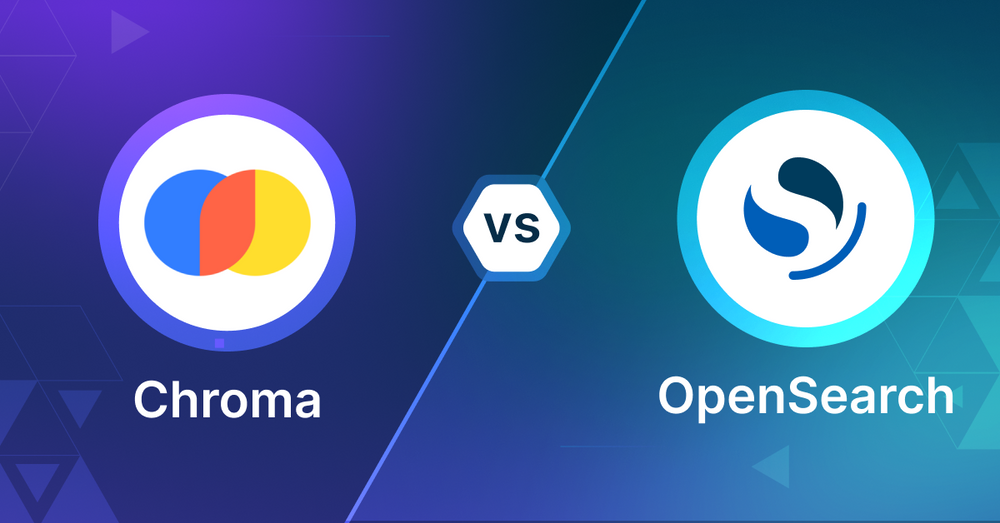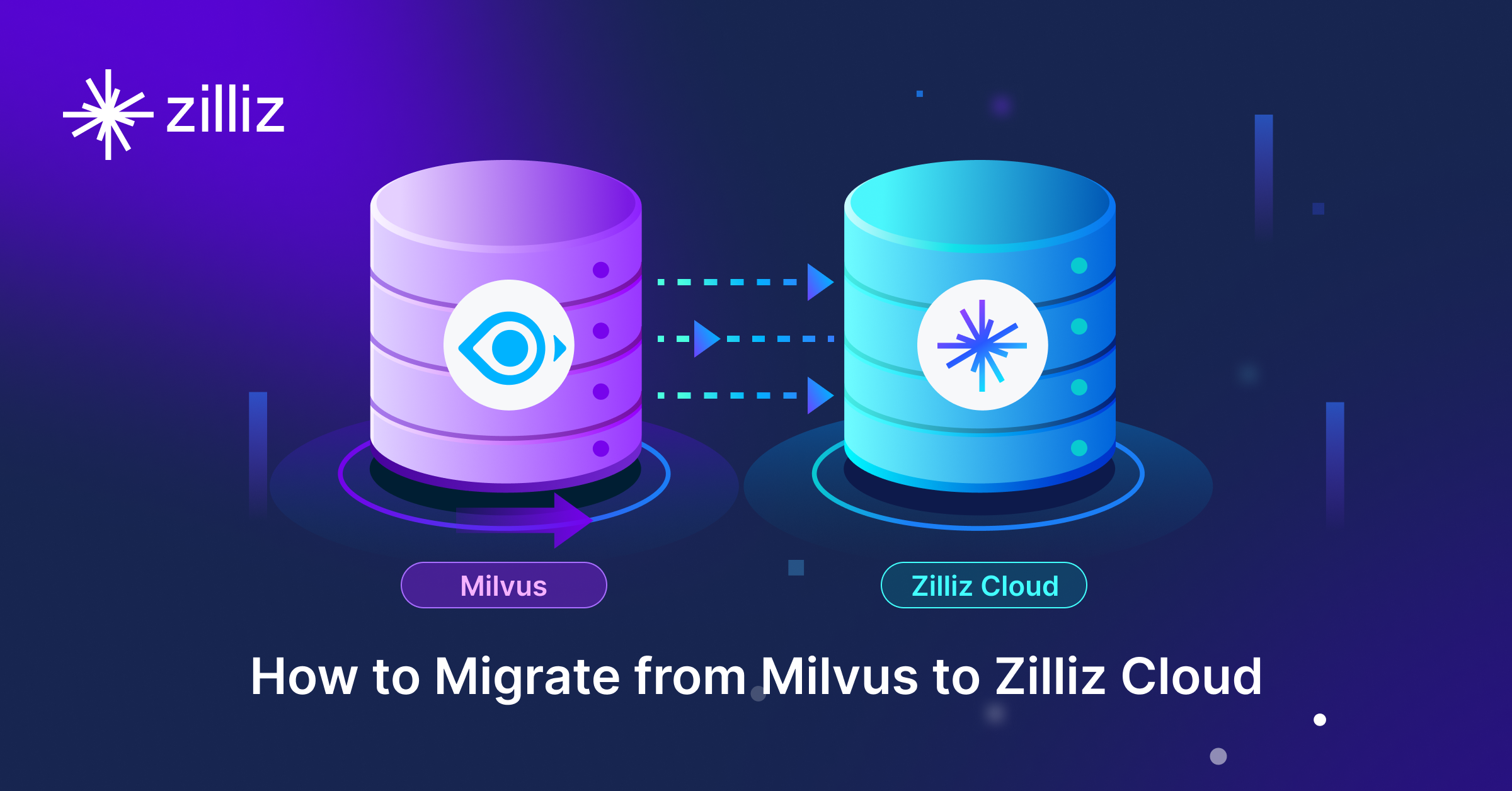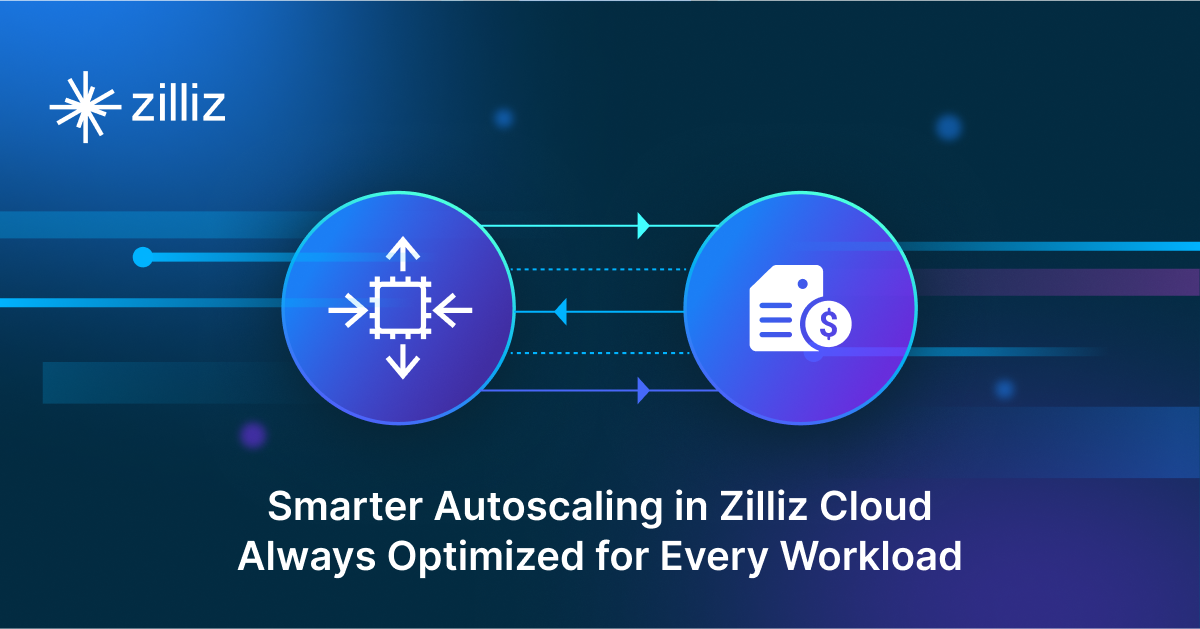Chroma vs OpenSearch: Choosing the Right Vector Database for Your AI Applications

As AI-driven applications become more prevalent, developers and engineers face the challenge of selecting the right database to handle vector data efficiently. Two popular options in this space are Chroma and OpenSearch. This article compares these technologies to help you make an informed decision for your vector database needs.
What is a Vector Database?
Before we compare Chroma and OpenSearch, let's first explore the concept of vector databases. A vector database is specifically designed to store and query high-dimensional vectors, which are numerical representations of unstructured data. These vectors encode complex information, such as text's semantic meaning, images' visual features, or product attributes. By enabling efficient similarity searches, vector databases play a pivotal role in AI applications, allowing for more advanced data analysis and retrieval.
Vector databases are adopted in many use cases, including e-commerce product recommendations, content discovery platforms, anomaly detection in cybersecurity, medical image analysis, and natural language processing (NLP) tasks. They also play a crucial role in Retrieval Augmented Generation (RAG), a technique that enhances the performance of large language models (LLMs) by providing external knowledge to reduce issues like AI hallucinations.
There are many types of vector databases available in the market, including:
Purpose-built vector databases such as Milvus, Zilliz Cloud (fully managed Milvus)
Lightweight vector databases such as Chroma and Milvus Lite.
Traditional databases with vector search add-ons capable of performing small-scale vector searches.
Chroma and OpenSearch represent different approaches to vector databases. Cassandra is a traditional database that has evolved to include vector search capabilities and Vald, on the other hand, is a purpose-built vector database. It was designed from the ground up to handle vector data and perform similarity searches efficiently. As a specialized solution, Vald focuses exclusively on vector operations and is optimized for tasks like similarity search and recommendations.
What is Chroma? An Overview
Chroma is an open-source, AI-native vector database that simplifies the process of building AI applications. It acts as a bridge between large language models (LLMs) and the data they require to function effectively. Chroma's main objective is to make knowledge, facts, and skills easily accessible to LLMs, thereby streamlining the development of AI-powered applications. At its core, Chroma provides tools for managing vector data, allowing developers to store embeddings (vector representations of data) along with their associated metadata. This capability is crucial for many AI applications, as it enables efficient similarity searches and data retrieval based on vector relationships.
One of Chroma's key strengths is its focus on simplicity and developer productivity. The team behind Chroma has prioritized creating an intuitive interface that allows developers to quickly integrate vector search capabilities into their applications. This emphasis on ease of use doesn't come at the cost of performance. Chroma is designed to be fast and efficient, making it suitable for a wide range of applications. It operates as a server and offers first-party client SDKs for both Python and JavaScript/TypeScript, providing flexibility for developers to work in their preferred programming environment.
Chroma's functionality revolves around the concept of collections, which are groups of related embeddings. When adding documents to a Chroma collection, the system can automatically tokenize and embed them using a specified embedding function, or a default one if not provided. This process transforms raw data into vector representations that can be efficiently searched. Along with the embeddings, Chroma allows storage of metadata for each document, which can include additional information useful for filtering or organizing data. Chroma provides flexible querying options, allowing searches for similar documents using either vector embeddings or text queries, returning the closest matches based on vector similarity.
Chroma stands out in several ways. Its API is designed to be intuitive and easy to use, reducing the learning curve for developers new to vector databases. It supports various types of data and can work with different embedding models, allowing users to choose the best approach for their specific use case. Chroma is built to integrate seamlessly with other AI tools and frameworks, making it a good fit for complex AI pipelines. Additionally, Chroma's open-source nature (licensed under Apache 2.0) provides transparency and the potential for community-driven improvements and customizations. The Chroma team is actively working on enhancements, including plans for a managed service (Hosted Chroma) and various tooling improvements, indicating a commitment to ongoing development and support.
What is OpenSearch? An Overview
OpenSearch is a search and analytics engine derived from Elasticsearch. It's designed to handle full-text search, log analytics, and vector search, making it a versatile tool for developers and engineers working with large datasets. As an open-source project, OpenSearch offers a distributed architecture that ensures scalability and real-time capabilities for both structured and unstructured data.
At its core, OpenSearch uses inverted indices to enable efficient full-text search. This foundation has been expanded to support vector search functionality, allowing for similarity searches on high-dimensional data. The system provides a query Domain Specific Language (DSL) that gives users fine-grained control over their searches. Additionally, OpenSearch includes machine learning capabilities that can be applied to tasks such as anomaly detection and data analysis.
For those looking to implement OpenSearch without managing the infrastructure, Amazon offers the AWS OpenSearch Service. This managed service simplifies the deployment, operation, and scaling of OpenSearch clusters in the AWS Cloud. It supports both OpenSearch and legacy Elasticsearch OSS (up to version 7.10), giving users flexibility in their choice of search engine.
OpenSearch's vector search capabilities are particularly noteworthy. The vector search collection type in OpenSearch Serverless provides a scalable and high-performing similarity search function. This feature enables developers to build modern machine learning-augmented search experiences and generative AI applications. Use cases for vector search are diverse, including image and document searches, music retrieval, product recommendations, and fraud detection. The vector engine supports various distance metrics and can accommodate up to 16,000 dimensions, making it suitable for a wide range of applications.
Key Differences
Search Methodology
Chroma focuses on vector similarity search for AI applications, using embeddings for nearest neighbor searches. OpenSearch offers both traditional full-text search using inverted indices and vector search capabilities, supporting multiple vector search methods.
Data Handling
Chroma primarily handles vector data and associated metadata, with automatic document embedding. OpenSearch supports a wider range of data types including structured, semi-structured, and unstructured data, making it versatile for various applications.
Scalability and Performance
OpenSearch provides a distributed architecture for horizontal scalability, suitable for large-scale datasets. Chroma is designed to be fast and efficient, particularly for AI-centric workloads, though specific scalability strategies aren't detailed in the provided information.
Flexibility and Customization
Chroma allows choice of embedding models and flexible querying. OpenSearch offers more extensive customization through its query DSL, scripting capabilities, and plugin system.
Integration and Ecosystem
Chroma integrates well with AI tools and frameworks, providing SDKs for Python and JavaScript/TypeScript. OpenSearch, part of the AWS ecosystem, integrates with various data processing and analytics tools.
Ease of Use
Chroma emphasizes simplicity and developer productivity with an intuitive interface. OpenSearch has a steeper learning curve but offers comprehensive documentation and a managed service option for easier deployment.
Cost Considerations
Both are open-source and free to self-host. OpenSearch offers a managed service with associated costs. OpenSearch provides robust security features, especially when used with Amazon OpenSearch Service. Specific security features for Chroma were not detailed in the provided information.
When to Choose Chroma
Chroma is the better choice for AI-centric applications that primarily rely on vector similarity search. It's particularly well-suited for projects where the main focus is on embedding and querying vector data, such as semantic search, recommendation systems, or other machine learning-driven applications. Chroma's strength lies in its simplicity and optimization for AI workflows, making it ideal for developers who want to quickly integrate vector search capabilities into their AI applications without dealing with the complexity of a more general-purpose search engine. It's a good fit for startups, research projects, or teams that are building specialized AI tools and don't require extensive full-text search or analytics capabilities beyond vector operations.
When to Choose OpenSearch
OpenSearch is the preferable option for more diverse and complex search and analytics needs, especially in enterprise environments. It's well-suited for applications that require a combination of full-text search, log analytics, and vector search capabilities. OpenSearch shines in scenarios where you need to handle various data types, perform complex queries, and scale to large datasets. It's a strong choice for organizations already using or planning to use AWS services, as it integrates well with the AWS ecosystem. OpenSearch is also advantageous when robust security features, fine-grained access control, and comprehensive monitoring are crucial. Consider OpenSearch for use cases such as e-commerce platforms, content management systems, log and metrics analytics, or any application where you need the flexibility to combine traditional search with vector search capabilities.
Conclusion
In conclusion, the choice between Chroma and OpenSearch depends largely on the specific needs of your project or organization. Chroma excels in AI-centric applications, offering a streamlined approach to vector similarity search with a focus on developer productivity and ease of use. It's ideal for projects that primarily deal with vector data and require quick integration of vector search capabilities. OpenSearch, on the other hand, provides a more comprehensive solution for diverse search and analytics needs. With its ability to handle various data types, perform complex queries, and scale effectively, OpenSearch is well-suited for enterprise-level applications that require a combination of full-text search, log analytics, and vector search. While Chroma offers simplicity and specialization for AI workflows, OpenSearch provides flexibility, robust security features, and seamless integration with the AWS ecosystem. Ultimately, the decision should be based on factors such as the primary use case, required features, scalability needs, existing infrastructure, and the level of complexity your team is prepared to manage.
When to Choose a Specialized Vector Database?
While Chroma and OpenSearch offer vector search capabilities, they are not optimized for large-scale, high-performance vector search tasks. If your application relies on fast, accurate similarity searches over millions or billions of high-dimensional vectors, such as in image recognition, e-commerce recommendations, or NLP tasks, specialized vector databases like like Milvus and Zilliz Cloud (the managed Milvus) are a better fit. These databases are built to handle vector data at scale, using advanced Approximate Nearest Neighbor (ANN) algorithms (e.g., HNSW, IVF ) and offering advanced features like hybrid search (including hybrid sparse and dense search, multimodal search, vector search with metadata filtering, and hybrid dense and full-text search), real-time ingestion, and distributed scalability for high-performance in dynamic environments.
On the other hand, general-purpose systems like Chroma or OpenSearch are suitable when vector search is not the primary focus, and you’re handling structured or semi-structured data with smaller vector datasets or moderate performance requirements. If you already use these systems and want to avoid the overhead of introducing new infrastructure, vector search plugins can extend their capabilities and provide a cost-effective solution for simpler, lower-scale vector search tasks.
Using Open-source VectorDBBench to Evaluate and Compare Vector Databases on Your Own
VectorDBBench is an open-source benchmarking tool designed for users who require high-performance data storage and retrieval systems, particularly vector databases. This tool allows users to test and compare the performance of different vector database systems such as Milvus and Zilliz Cloud (the managed Milvus) using their own datasets and determine the most suitable one for their use cases. Using VectorDBBench, users can make informed decisions based on the actual vector database performance rather than relying on marketing claims or anecdotal evidence.
VectorDBBench is written in Python and licensed under the MIT open-source license, meaning anyone can freely use, modify, and distribute it. The tool is actively maintained by a community of developers committed to improving its features and performance.
Download VectorDBBench from its GitHub repository to reproduce our benchmark results or obtain performance results on your own datasets.
Take a quick look at the performance of mainstream vector databases on the VectorDBBench Leaderboard.
Read the following blogs to learn more about vector database evaluation.
Further Resources about VectorDB, GenAI, and ML
- What is a Vector Database?
- What is Chroma? An Overview
- What is OpenSearch? An Overview
- Key Differences
- When to Choose Chroma
- When to Choose OpenSearch
- Conclusion
- When to Choose a Specialized Vector Database?
- Using Open-source VectorDBBench to Evaluate and Compare Vector Databases on Your Own
- Further Resources about VectorDB, GenAI, and ML
Content
Start Free, Scale Easily
Try the fully-managed vector database built for your GenAI applications.
Try Zilliz Cloud for FreeKeep Reading

Why and How to Migrate from Self-Hosted Milvus to Zilliz Cloud
A simple, step-by-step guide to migrating from Milvus to Zilliz Cloud. Learn both endpoint and backup methods for a smooth, scalable vector database migration.

Smarter Autoscaling in Zilliz Cloud: Always Optimized for Every Workload
With the latest upgrade, Zilliz Cloud introduces smarter autoscaling—a fully automated, more streamlined, elastic resource management system.

How AI Is Transforming Information Retrieval and What’s Next for You
This blog will summarize the monumental changes AI brought to Information Retrieval (IR) in 2024.
The Definitive Guide to Choosing a Vector Database
Overwhelmed by all the options? Learn key features to look for & how to evaluate with your own data. Choose with confidence.